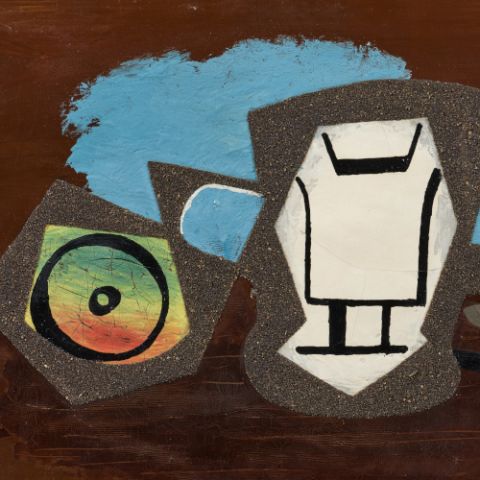
Lot 29 | Serge Poliakoff | Composition abstraite
1900 Moscow - 1969 Paris
Title: Composition abstraite.
Date: 1967.
Technique: Oil on canvas.
Measurement: 162 x 130cm.
Notation: Signed lower right: SERGE PoLiAKoFF.
Frame/Pedestal: Craftman's frame.
Provenance:
- Private collection Germany
Exhibitions:
- Gallery Cavalero, Cannes 1968, cat. no. 7
- Gallery A, Munich 1982
- Museum Würth, Künzelsau 1997
- Künstlerhaus, Vienna 1998
Literature:
- Poliakoff, Alexis: Serge Poliakoff - Catalogue Raisonné, Vol. V, 1966-1969, Munich 2016, cat. rais. no. 67-33, p. 204, ill.
- Exhib. cat. Poliakoff, A Retrospective, Museum Würth, Sigmaringen 1997, p. 211, ill.
- Large-format, powerfully fresh painting by the "Grandseigneurs" of the École de Paris
- Late work, characterised by its bright colours and clearly defined colour fields
- At the time of its creation, Poliakoff was highly respected, honoured with international prizes and had represented his new home country at the Venice Biennale
Poliakoff's art universe
Serge Poliakoff comes from the educated Russian upper class and has been fascinated by icon painting since his childhood. After the Russian Revolution, he came to Paris at the age of 24, via an adventurous route. Here, at the end of the 1940s, Poliakoff developed his very typical non-representational, but always organic-looking color fields, also under the influence of Robert and Sonia Delaunay, Wassily Kandinsky and Otto Freundlich.
Poliakoff's paintings are not abstractions, because they are not based on reality. His color fields are autonomous in themselves. The relationships between the forms and colors, the arrangement of the elements within the only reality that is the boundaries of the canvas, that is Poliakoff's genuine artistic universe.
Melodious Paintings
Serge Poliakoff is not only a painter, but also a musician, and until the 1950s he earned his living mainly as a guitarist. As a musician and as a painter, harmony and tension, tonality and rhythm are the defining elements for him. Analogous to music, Poliakoff composes with colors, he “hears” their contrasts and the emotions they evoke. Ideally, the viewer of his works should “find a positive calm that opens people's eyes to another world.” (Henkel, Katharina: Serge Poliakoff and his artistic environment, in: Exh. Cat. Serge Poliakoff - Retrospective, Kunsthalle Emden 2006. P. 66) This is where the circle closes to the icon as a spiritual meditation medium. Three color values meet on this large canvas, which is the largest format Serge Poliakoff ever worked on: a deep, almost earthy, dark red, a coral pink, and a bright yellow. Three polygonal surfaces are assigned to each of these colors. In the center, two almost equally sized and similarly shaped forms of the lightest and darkest values meet. Their common boundary forms the central axis of the painting. Outwards, towards the edge of the painting, these two forms are enclosed predominantly by the “middle value” coral pink. In addition, to a lesser extent, the dark red is enclosed by the bright yellow (bottom) and the bright yellow by the dark red (top). It is noticeable that the lower left corners of these two central shapes are each adjacent to the corner of a field of the same color. In the upper part of the painting, the corners of two coral pink fields also touch.
Composition abstraite
The viewer is unlikely to consciously perceive or analyze this distribution of color values; but this structure gives the overall composition its rhythm and balance. In Serge Poliakoff's late work, to which the present painting also belongs, the colors become more radiant. In addition, the surfaces become larger and the artist applies the pigments in the upper layers transparently, so that the background shimmers through. The clear, angular forms take on a great liveliness and the painting process, the artist's handwriting, becomes legible. The combination of artistic decisions – for a large format, for bright colors, for large forms and a lively internal drawing – gives this late work of the painter a strong presence and great sublimity.
Alexandra Bresges-Jung.
Modern, Post War & Contemporary Art
+49 221 92 58 62 300
Print this lot | Recommend lot |
Conditions of this Lot
32% buyer’s premium on the hammer price
Estimated shipping costs for this lot:
Arrangement after the auction.
Serge Poliakoff Nouvelle École de Paris Tachism Modern Art Post War 1960s Craftman's frame Shapes Painting Oil Colour





